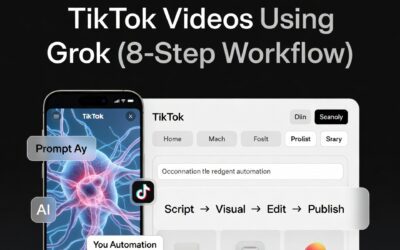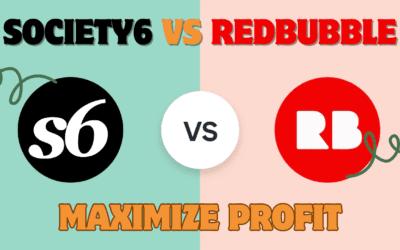In an age of artificial intelligence, your digital past has an uncanny ability to follow you—but new privacy rights are fighting back.
Introduction
The right to be forgotten, a legal concept established under regulations like the EU’s General Data Protection Regulation (GDPR), empowers individuals to request the deletion of their personal data when it’s no longer necessary, relevant, or consented to . This privacy right has become increasingly significant as companies worldwide collect and process vast amounts of personal information.
Now, in the era of artificial intelligence, this fundamental privacy right faces unprecedented challenges. As AI systems ingest enormous datasets for training, your personal information—from social media posts and blog comments to images and professional profiles—may have been swept up without your explicit consent. The question becomes: How can you exercise your right to be forgotten when your data is woven into the very fabric of an AI model?
This article will guide you through the complex landscape of removing personal data from AI training sets. We’ll explore the legal foundations, the technical hurdles that make this process so challenging, and most importantly, the actionable steps you can take to assert your privacy rights in the age of AI.
Understanding the Right to Be Forgotten in the AI Era
Legal Basis of the Right to Be Forgotten (Article 17 GDPR)
The right to be forgotten, also known as the right to erasure, gained significant legal standing through Article 17 of the GDPR, which came into effect in 2018 . This regulation established that individuals have the right to request the deletion of their personal data under specific circumstances, such as when the data is no longer necessary for its original purpose, when consent is withdrawn, or when the data has been unlawfully processed .
The legal concept originated earlier from a landmark 2014 ruling by the Court of Justice of the European Union (CJEU) in the Google Spain case . The court ruled that individuals could request search engines to delist links containing personal information that is “inadequate, irrelevant, or no longer relevant, or excessive” . This established an important precedent for digital privacy rights that has since influenced global legislation.
Beyond the EU, similar rights have emerged worldwide. California’s Consumer Privacy Act (CCPA) and subsequent Delete Act provide residents with the right to request deletion of their personal information . However, important jurisdictional differences exist. While European law prioritizes privacy protection, U.S. law often places greater emphasis on First Amendment protections for free speech and information access , creating a complex regulatory landscape for global AI companies to navigate.
Why AI Training Sets Challenge Data Erasure
AI systems present unique challenges to traditional data erasure concepts that didn’t exist with conventional databases. When personal information is incorporated into AI training processes, it undergoes a fundamental transformation that complicates deletion requests:
- From data to patterns: In AI training, personal data is not simply stored but is used to adjust billions of parameters within neural networks . The original data may be discarded after training, but its influence persists in the model’s patterns and behaviors .
- Global replication: Unlike traditional databases with clear locations, AI models—particularly open-source ones—can be downloaded, copied, and deployed worldwide . There’s “no way to track all the places these AI models might be running” , creating an enforcement gap that didn’t exist with previous technologies.
- Differing architectural approaches: The technical implementation of AI systems varies significantly. Major tech companies like Google and OpenAI maintain centralized control over their models, making deletion requests more manageable (in theory) . However, with the rise of open-source AI models that anyone can download and use, “no single entity is responsible for handling deletion requests” .
These challenges represent a fundamental shift in how we think about data storage and deletion, requiring new technical and legal approaches to privacy protection.
What Does “Removing Your Data from AI Training Sets” Really Mean?
Technical Barriers: Model Memorization vs Data Deletion
The process of removing specific data from trained AI models presents significant technical hurdles that distinguish it from traditional data deletion:
- Data entanglement: In AI systems, personal information doesn’t exist in isolatable containers but becomes entangled across billions of parameters . Researchers describe this as “entangled memory” where individual data points are woven throughout the entire model , making selective removal exceptionally difficult without impacting the model’s overall capabilities.
- The memorization phenomenon: AI models don’t just store information—they learn patterns from it. Even if the original training data is deleted, the knowledge and patterns derived from that data may persist in the model’s outputs . This is particularly problematic with large language models that can sometimes reconstruct personal information even when it wasn’t explicitly stored in their training data .
- Distributed storage challenges: Modern AI training often involves complex data pipelines across multiple systems, including cloud storage, computational clusters, and backup repositories . Personal data may exist in numerous locations simultaneously—including in preprocessing caches, intermediate training checkpoints, and distributed computing environments—making comprehensive identification and removal a complex operational task .
Emerging Techniques: Machine Unlearning and Model Editing
Researchers and companies are actively developing technical solutions to address these challenges:
- Machine unlearning: This emerging field focuses on developing algorithms that can selectively “forget” specific data points without requiring complete model retraining . While promising, these techniques remain in early development stages and often come with significant computational costs . Current approaches include modifying model parameters to reduce the influence of specific training examples or using differential privacy techniques to limit memorization from the outset .
- Output filtering and suppression: Many AI companies currently implement post-processing filters that prevent models from generating specific personal information in their outputs . While this doesn’t remove the underlying data influences from the model, it can help mitigate privacy risks in practical applications.
- Federated learning and differential privacy: Some privacy-preserving architectures are being designed with forgetting capabilities built in. Federated learning keeps personal data distributed rather than centralized , while differential privacy mathematically limits how much any single data point can influence the overall model .
Despite these emerging solutions, comprehensive data removal from AI systems remains a significant technical challenge without universally adopted standards or implementation practices.
Real-World Examples & Statistics
Case Study: Public Data Used in AI Training
The tension between AI development and personal privacy has already produced significant real-world consequences. In one notable example, Italy’s data protection authority temporarily banned ChatGPT over concerns about how the AI handled personal data and complied with deletion requests . This forced OpenAI to create special opt-out mechanisms for EU users, highlighting the regulatory pressure that companies now face regarding their training data practices .
Another revealing case involves the use of publicly available internet data for AI training. Much of the web content created by individuals—from blog comments and social media posts to professional profiles—has likely been incorporated into various AI training sets without explicit consent. The challenge is particularly acute with open-source AI models, where once a model is publicly released, “there’s no practical way to enforce changes across all copies” , creating what some describe as an unsolvable enforcement gap for data deletion requests.
Statistics on AI Models, Data Retention & Erasure Requests
The scale of data processing in AI systems and the growing public demand for control over personal information are reflected in several key statistics:
- Google received approximately 2.4 million requests for URL delisting from its search results between 2014 and 2018 following the initial right to be forgotten ruling , demonstrating significant public demand for control over personal information.
- The European Data Protection Board has made the right to erasure its enforcement priority for 2025 , with 32 Data Protection Authorities across Europe participating in coordinated investigations into how organizations handle deletion requests .
- California’s Delete Act, which took effect in 2023, represents a significant expansion of deletion rights specifically addressing data brokers , with implications for AI training data sourced from such brokers.
Actionable Steps You Can Take Today
Identifying Whether Your Data Is in an AI Training Set
Determining if your specific data has been used to train AI models can be challenging, but several approaches can help:
- Review privacy policies: Check the data usage policies of platforms where you’ve shared content. Many technology companies now disclose in their privacy policies how user data might be utilized for AI training purposes.
- Monitor data broker activity: Use services like California’s “Delete Act” implementation to identify which data brokers might be selling your information , as this is a common source for AI training data.
- Leverage transparency tools: Some AI companies now provide portals where users can inquire about data usage. While these are still limited, they represent a growing resource for understanding how your data may be used.
How to Submit a Data Erasure Request (Templates, Tips)
Submitting effective data deletion requests requires a structured approach:
- Use official channels: Major AI developers like Google, OpenAI, and Anthropic have established processes for data removal requests. Start with their official privacy portals or contact their Data Protection Officers directly .
- Be specific and verifiable: Clearly identify the personal data you want removed and provide sufficient information for verification. For example: “I request the deletion of my [specific data type] from your training datasets, which can be found at [URL or specific location].”
- Cite relevant laws: Reference the specific regulations that apply, such as: “Under Article 17 of the GDPR, I exercise my right to erasure because [state valid reason: consent withdrawn, data no longer necessary, etc.]” .
- Document everything: Keep records of your requests, including dates, recipients, and any responses received. This documentation may be important for follow-up actions or regulatory complaints.
Mitigation Strategies if Your Data Cannot Be Fully Removed
When complete technical removal isn’t feasible, consider these alternative approaches:
- Opt-out mechanisms: Many AI companies now offer opt-out processes for future training cycles . While these don’t address data already incorporated into models, they can prevent further use of your information.
- Output filtering requests: Ask companies to implement permanent filters that prevent their systems from generating responses containing your personal information .
- Data masking: For publicly available information you control, consider editing or updating the source content to remove or anonymize sensitive elements, which may influence how future AI models process this information.
Key Challenges & Future Outlook
Technical, Legal and Ethical Obstacles
The implementation of the right to be forgotten in AI systems faces significant ongoing challenges:
- Technical feasibility: The core technical problem remains: once personal information is fully embedded in a trained neural network, complete removal may require impractical retraining costs or may not be possible with current techniques .
- Jurisdictional conflicts: Differing international approaches create enforcement challenges. While EU law requires compliance with deletion requests, U.S. First Amendment protections may conflict with these requirements , creating legal uncertainty for global AI developers.
- Ethical balancing: There are legitimate concerns about how extensive data removal might impact AI system quality and capabilities . Additionally, critics worry that the right to be forgotten could lead to “historical revisionism” where important public records become inaccessible .
What Organizations & Regulators Are Doing
The regulatory and technical landscape is rapidly evolving to address these challenges:
- Enhanced enforcement: The European Data Protection Board has launched a coordinated enforcement framework specifically focusing on the right to erasure in 2025 . This means regulators across Europe will be conducting targeted investigations into how organizations handle deletion requests .
- Legislative developments: California’s AB 1008 law, taking effect in 2025, explicitly requires AI developers to honor deletion requests for personal information embedded in models , representing a groundbreaking approach to the technical challenges.
- Technical innovation: Research continues into machine unlearning techniques and privacy-preserving AI architectures . The development of standardized data provenance tracking and verifiable deletion mechanisms represents promising directions for future solutions .
Conclusion
The right to be forgotten faces its most significant test yet in the age of artificial intelligence. As we’ve explored, this fundamental privacy right—established in regulations like GDPR—collides with the technical realities of how AI systems learn and operate. While the challenges are substantial, from data entanglement in neural networks to jurisdictional conflicts in global regulations, individuals are not without recourse.
The regulatory landscape is rapidly evolving, with coordinated enforcement efforts underway across Europe and groundbreaking legislation emerging in California . Technologically, solutions like machine unlearning and privacy-preserving architectures are actively being developed, though they’re not yet mature .
Most importantly, as an individual, you have actionable steps available—from submitting formal deletion requests to utilizing opt-out mechanisms for future training cycles. While the path to comprehensive data removal from AI systems remains complex, your awareness and assertion of these rights play a crucial role in shaping the future of privacy in the AI era.
The conversation between technology, regulation, and individual rights has never been more critical. By understanding both the power and the limitations of the right to be forgotten in the context of AI, you can better navigate this evolving landscape and protect your digital identity in an age of artificial intelligence.
Sources and References
- What Is The Right to Be Forgotten? How Can Organizations Respond? – Alation
- The Right to Erasure in the Age of AI: Can Personal Data Ever Truly Disappear? – LinkedIn
- GDPR: Data Compliance Best Practices For 2025 – Alation
- What is the California Consumer Privacy Act (CCPA)? – IBM
- OpenAI: ChatGPT Wants Legal Rights. You Need The Right To Be Forgotten. – Forbes
- Right to be forgotten – Digital Watch
- CEF 2025: Launch of coordinated enforcement on the right to erasure – European Data Protection Board
- GDPR Right to Erasure an Enforcement Priority in 2025 – CompliancePoint
- The AI That Won’t Forget You: Why the “Right to Be Forgotten” Collides With Artificial Intelligence – Medium
- Generative AI and the Right to Be Forgotten: An Unsolvable Legal Paradox? – LinkedIn
This article was updated to reflect the latest regulatory developments and technical understanding of AI data removal processes as of 2025. The field continues to evolve rapidly, and readers are encouraged to consult current resources for the most up-to-date information.
















